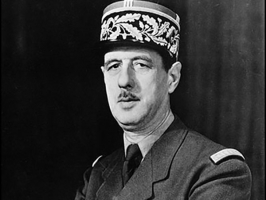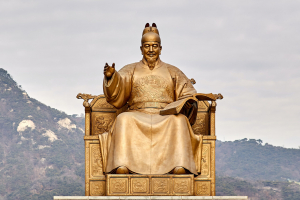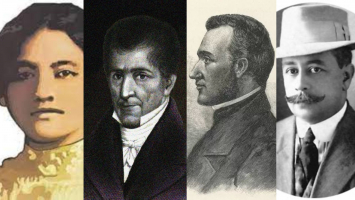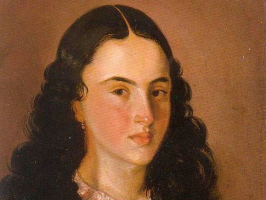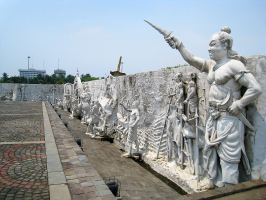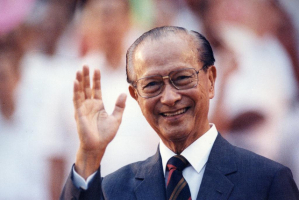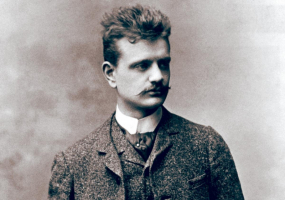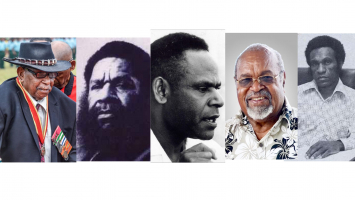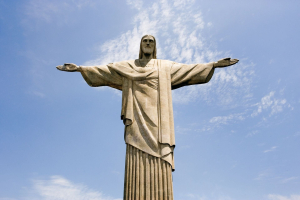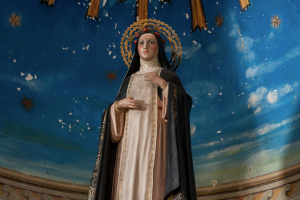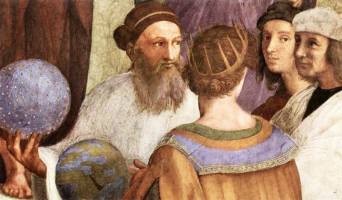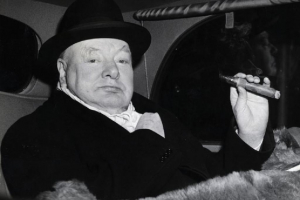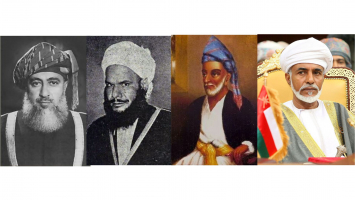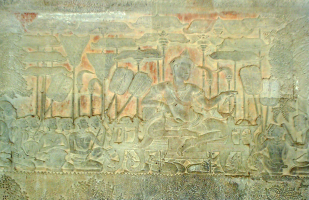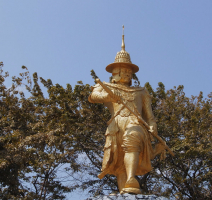Top 4 Most Important Historical Figures In Saint Kitts & Nevis
Saint Kitts and Nevis of the Lesser Antilles or Confederation of Saint Kitts and the State of Nevis is made up of two islands in the eastern Caribbean Sea. ... read more...They have a total area of 104 square miles (about 269 square kilometers). The Union of Saint Kitts and Nevis has been a member of the sovereign Commonwealth since independence in 1983, with the British monarch as the head of state. Along with other cabinet members, the Prime Minister acts as the head of state. Here are the 4 Important Historical Figures who changed the fortunes of Saint Kitts & Nevis. Let us read this article to find out.
-
The first Historical Figure In Saint Kitts and Nevis that Toplist would like to introduce to you is Alexander Hamilton. He was an American revolutionary. He founded the Federalist Party, the country's financial system, the United States Coast Guard, and the "New York Post" in addition to being a supporter of the US Constitution. Hamilton was a key contributor to the economic policy of President George Washington's administration as the first secretary of the treasury. He oversaw the establishment of the nation's first two de facto central banks, a system of tariffs, the restart of cordial commercial relations with Britain, and federal government payment of the states' American Revolutionary War debts. His plan called for a strong executive-led central government, a robust commercial economy, support for manufacturing, and a strong military.
In Nevis's Charlestown, Hamilton was born outside of wedlock. A successful merchant adopted him after he was abandoned as a young child. He was brought to New York for education in his late teens by local patrons. The American Revolutionary War began, and he enlisted in the militia. During the New York and New Jersey wars, he saw duty as an artillery officer with the New Continental Army. In 1777, he rose to the position of Commander-in-Chief General George Washington's top advisor. However, he swiftly reverted to his field command position in time for a crucial maneuver that secured victory in the Yorktown Siege and swiftly brought an end to the war.
He was chosen to represent New York in the Union Congress after the war. The search for alternatives to the weak coalition government established by the Articles of Confederation was led by Hamilton. By writing 51 of The Federalist Papers' 85 parts, which are still seen as one of the most significant sources for interpreting the Constitution, he contributed to the ratification of the Constitution. Hamilton served in President Washington's first cabinet as the head of the Treasury Department. He is still the youngest cabinet member to serve in the US since the founding of the republic. Hamilton contended that the Constitution's implied powers gave the government the legal right to fund the national debt, assume state debt, and create the federally backed Bank of the United States. Import charges and whiskey taxes provide the majority of the funding for these initiatives. The Democratic-Republican Party, led by Thomas Jefferson and James Madison, battled the Federalist Party, which was founded on the ideas of Alexander Hamilton.
He went back to New York in 1795 to resume his legal career. In order to repel the invasion of the soldiers of the First French Republic in 1798–1799, he called for mobilization under President John Adams. He was then named Commander-in-Chief of the United States Army, where he rebuilt and prepared for war.
In New York City, Hamilton carried on his professional and legal endeavors and actively worked to make the worldwide slave trade illegal. In the 1804 New York governor's race, Hamilton ran an anti-Vice President Burr campaign. Burr viewed it as an insult and asked Hamilton to write him an apology letter, but he refused. On July 11, 1804, Burr challenged him to a duel, during which Burr shot and mortally wounded Hamilton. On July 12, 1804, at two o'clock in the afternoon, Hamilton passed away in Bayard's house, which is located just off of Gansevoort Street today. Two days later at noon, the city's founders suspended all operations in order to attend Hamilton's burial. At his funeral, Gouverneur Morris gave a eulogy and covertly established a foundation to help his widow and kids. In Manhattan's Trinity Church Cemetery, Hamilton is to be buried.
In sum, Alexander Hamilton:
- was orphaned as a child, adopted, and joined the militia after the outbreak of war.
- was an American revolutionary, founder of the Federalist Party, the financial system, and the United States Coast Guard.
- an important contributor to economic policy as the first secretary of the treasury.
- was later appointed Commander-in-Chief of the United States Army, where he rebuilt and prepared for war.
- worked to oppose the worldwide slave trade in New York.
- died at and was buried in Manhattan's Trinity Cemetery in 1804.
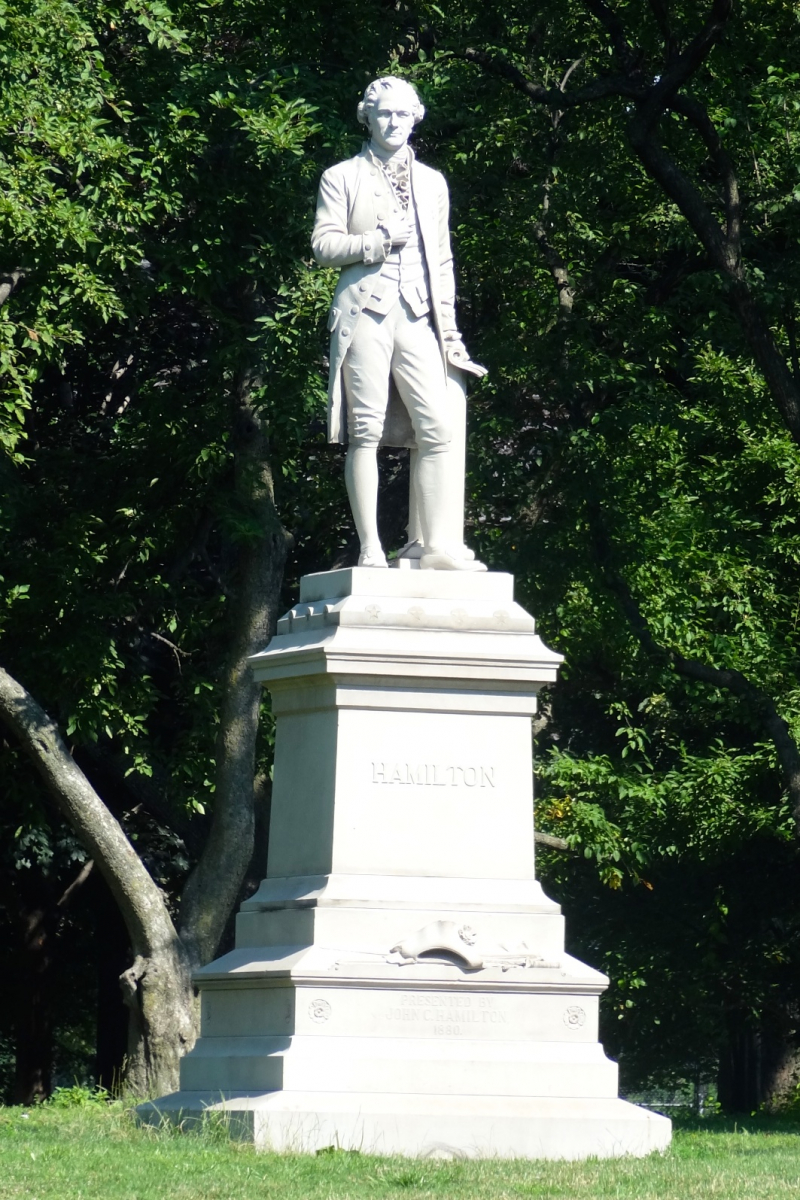
The statue of Alexander Hamilton - Photo: wikipedia.org Video: Harlem Roots -
American-Nevisian physician and scientist, John B. Gorrie is credited with developing electromechanics. He was raised in South Carolina after being born on Nevis Island in the Leeward Islands of the West Indies on October 3, 1803, to Scottish parents. He earned his medical training at the College of Physicians and Surgeons in Fairfield, New York. He relocated to the port city of Apalachicola on the Gulf Coast of Florida in 1833. Gorrie is involved in the community in addition to working as a resident at two hospitals. He held many positions throughout the years, including board member, postmaster, president of the Pensacola Bank's Apalachicola Branch, secretary of the Masonic Lodge, and one of the Trinity Episcopal Church's founders.
Tropical illnesses, particularly yellow fever, are the subject of Dr. Gorrie's medical studies. He pushed for the draining of wetlands and the cooling of wards based on the prevalent idea of the period because he claimed that foul air and malaria caused sickness. In 1844, he invented the first machine for making ice. Gorrie abandoned his medical profession after 1845 in order to focus on refrigeration goods. After achieving brick-sized stone production by 1850, Gorrie was given the patent 8080 for an ice maker. Jacob Perkins, known as the "father of the cabinet" cold, was an American inventor who received a patent for an "Appliance and means for the production of ice and cooling fluids" in England and Scotland in 1835. Because of his poverty, Gorrie tried to raise money to build his device, but the business failed when his partner passed away. Humiliated by criticism, financially destroyed, and in poor health, Gorrie went into seclusion and passed away on June 29, 1855. He was buried in Magnolia Cemetery.
The John Gorrie State Museum, his gravesite, and a memorial are all located in the Apalachicola neighborhood of today's Gorrie Square, which bears his name. In his honor, John Gorrie Middle School, which is now an apartment complex called The John Gorrie in Jacksonville, and John Gorrie Elementary School, which is located in Tampa, were both named. Additionally, the John Gorrie Award is given each year to a University of Florida School of Medicine alumnus who is thought to be the finest student overall with the potential to become a top-tier doctor.
In short, John Gorrie:
- was a Nevis-American physician and scientist.
- was the president of the Apalachicola Branch of the Bank of Pensacola, secretary of the Masonic Lodge, and one of the founders of Trinity Episcopal Church.
- studied tropical diseases, especially yellow fever.
- invented the first ice machine in 1844.
- gave up medicine after 1845 to focus on refrigeration, known as the "father of the refrigerator".
- was a recluse and died on June 29, 1855, buried in Magnolia Cemetery.
- today, there are many monuments, memorials, and awards named after him.
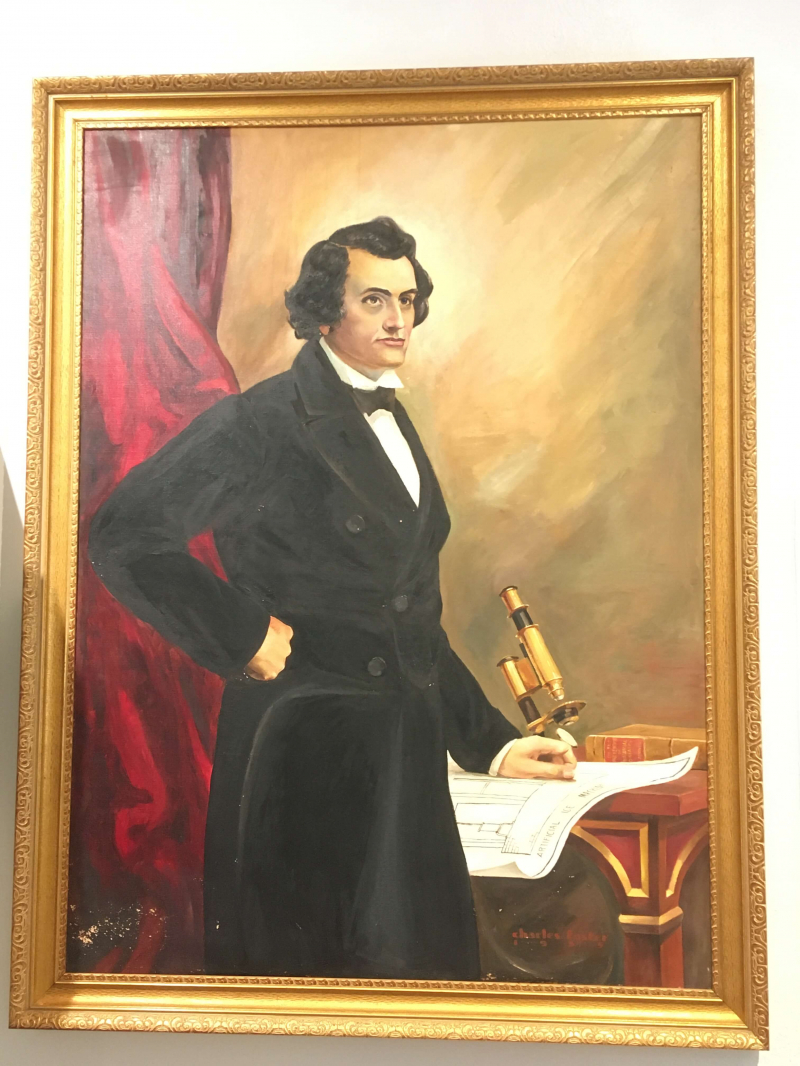
Photo: historywithkev.com Dr. John Gorrie: The Father of Air Conditioning - Video: usfri admin -
Prior to becoming the first premier of Saint Kitts and Nevis, Robert Llewellyn Bradshaw worked as a minister, politician, and labor organizer.
In the Saint Kitts village of Saint Paul Capisterre, Bradshaw was born. When Bradshaw was nine months old, his father left for the country, leaving Bradshaw to be raised by his grandma. At the time, Saint Kitts offered the seventh grade as the highest level of primary education, and he attended St. Paul to complete it. Bradshaw grew interested in the labor movement while working as an apprentice machine builder at St. Kitts at the age of 16. He joined St. Kitts and Nevis as a secretary in 1940, leaving the sugar mill following a strike for increased pay. In 1944, Bradshaw took over as union president after Joseph Matthew Sebastian. He married Kittitian-Lebanese Mildred Sahaley in 1963.
Bradshaw was a political stalwart of the nation and backed the cause of the road builders. In 1945, he was elected party leader of the newly established St. Kitts-Nevis-Anguilla Labor Party. In 1946, when he first joined politics, he obtained a place on the Legislative Council and later was elected to the Executive Council. He served St. Kitts-Nevis-Anguilla as secretary of manufacturing and commerce in 1956. Bradshaw was elected to the House of Commons and served as the West Indies Federation's finance minister from 1958 and 1962 when the West Indies Federation was in existence.
Bradshaw passed away from prostate cancer at his Basseterre residence on May 23, 1978. He was laid to rest in Springfield Cemetery. Paul Southwell, his deputy prime minister, succeeded him.
Bradshaw was given the first National Hero title by the Congress of Saint Kitts and Nevis posthumously in 1996, and he is commemorated every year on National Heroes Day, which is observed on his birthday. Golden Rock Airport in Saint Kitts was renamed Robert L. Bradshaw International Airport in his honor on the first National Heroes Day in 1998. At the location of Robert Llewellyn Bradshaw's birth in St. Paul, a memorial park was constructed in 2007. The Robert Llewellyn Bradshaw building on the University of Windsor Medical School's Cayon campus was dedicated on September 17, 2010.
To conclude, Robert Llewellyn Bradshaw:
- was the first prime minister of Saint Kitts and Nevis, also serving as a minister, politician, and labor organizer.
- became interested in the labor movement while working as an apprentice machinist in St. Kitts at the age of 16.
- was elected party leader of the St. Kitts-Nevis Anguilla, then elected to the House of Commons and served as finance minister of the West Indies Federation between 1958 and 1962.
- died of prostate cancer at his Basseterre estate in 1978 and is laid to rest at Springfield Cemetery.
- was posthumously awarded the first National Hero title by the Congress of Saint Kitts and Nevis in 1996 with a series of landmarks named after him.
Video: SKN Newsline Robert L Bradshaw Memorial - Video: cadillacbill -
From 1979 to 1980, Mr. Lee Llewellyn Moore served as the premier of Saint Kitts and Nevis. He belonged to Saint Kitts and Nevis Labor Party as well. In 1967, Lee started working as an assistant to Prime Minister Robert Llewellyn Bradshaw. In 1971, he was named attorney general, and appointed Deputy Prime Minister in Paul Southwell's cabinet.
On February 15, 1939, Lee Llewellyn Moore was born at Half Way Tree, St. Kitts. He is the child of St. Kitts residents Daphne Moore and Theophilus Penny. Lee Moore was the sole child of his maid mother, Mrs. Moore. He started Middle Island Public School when he was five years old. Mother and daughter's life was fairly comfortable up until the day their Godwin Ghaut garbage house burned down. When Lee was eight years old, the family moved into a rented home and things started to get tight financially.
Lee Moore was awarded a government scholarship to St. Kitts and Nevis in 1952, valued at $50.40 per year. Despite the challenging circumstances, his mother is certain that her son will not lose this educational chance. The scholarship covers all of his costs, with the exception of the uniform and game fees. Young Moore continued to receive the Leeward Islands Scholarship five years later. Many had hoped that he would study medicine but he opted to pursue a career in law instead. He worked at the School of Grammar for eighteen months as a master's assistant before enrolling at University London to pursue a career in law. He worked at the London Stock Exchange during the summer holiday to supplement his income. He received both a law degree with honors and a theology degree in 1962. He qualified for the position of Vice-Chancellor of King's College and received the Jelf Medal from the Faculty of Law. After a year, Lee Moore received a Master's degree and was admitted to the Central Temple Association's Honorary Chamber. He began working as a lecturer in law at the City of Birmingham after completing further coursework.
He was a victorious candidate in the New State during his first election in 1971. By 826 votes to 682, he defeated People's Action Movement founder and president William Herbert. He received the job of Attorney General from Prime Minister Bradshaw, which he held until 1979. As he took the political stage, Lee Moore issued the following challenge to the opposition: "Whoever wants, this is power; who does not want, this is peace; who does not want, this is love; who does not want, this is friendship". Some segments of the population found him unpopular because of his blunt political views.Lee L. Moore was appointed as a non-resident Extraordinary and Plenipotentiary Ambassador to the UN following the Labor Party's victory in 1995. In his new post, he is in charge of advising the government on matters such as the ratification of treaties and conventions as well as the government's stance toward foreign nations and the UN. In 1998, he was able to establish diplomatic ties with South Africa in this role. He was also asked to join a two-person group that was looking at ways to improve political unity involving Barbados and OECS members.
At the age of 61, Sir Lee Moore passed away from prostate cancer on May 6, 2000, at Columbia Presbyterian Hospital in New York, USA. Sir Lee is buried at Springfield Cemetery, Saint Kitts. Thanks to her extraordinary academic prowess, talent, love of her nation, and dedication to regional integration, he made his mark on St. Kitts and the rest of the Caribbean. On Wednesday, September 16, 2004, a federal holiday known as National Heroes Day, the Court Building on Independence Square East in Basseterre was renamed Sir Lee Llewellyn Moore's Judicial and Legal Services Complex in his honor. With his achievements, Lee Moore deserves to be an Important Historical Figure in Saint Kitts and Nevis.
In sum, Sir Lee Llewellyn Moore:
- was prime minister of Saint Kitts and Nevis from 1979 to 1980.
- was born into a normal family, and went through many periods of financial hardship.
- worked at the Grammar School as a master's assistant before enrolling at the University of London to pursue a career in law.
- was appointed Non-Resident Extraordinary and Plenipotentiary Ambassador to the UN, advising the government on issues such as the ratification of treaties and conventions.
- passed away from prostate cancer on May 6, 2000, at Columbia Presbyterian Hospital in New York, USA, and was buried at Springfield Cemetery, Saint Kitts.
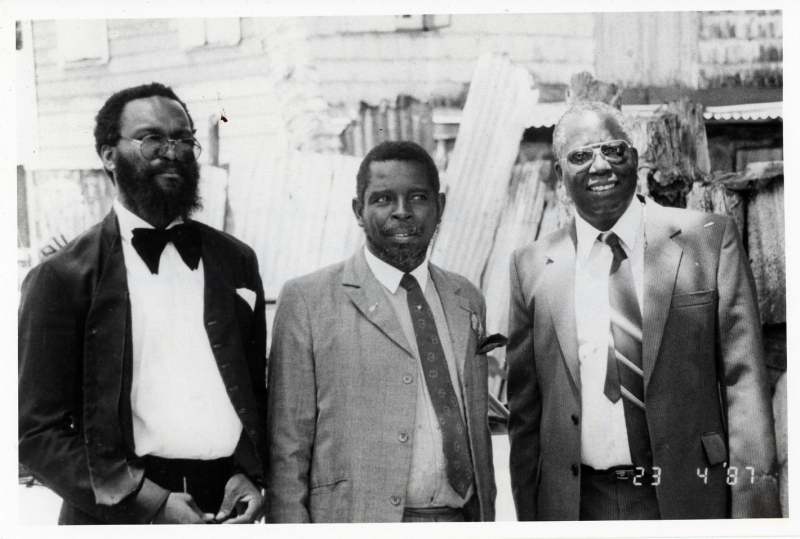
Lee Moore (middle) - Photo: historicstkitts.kn 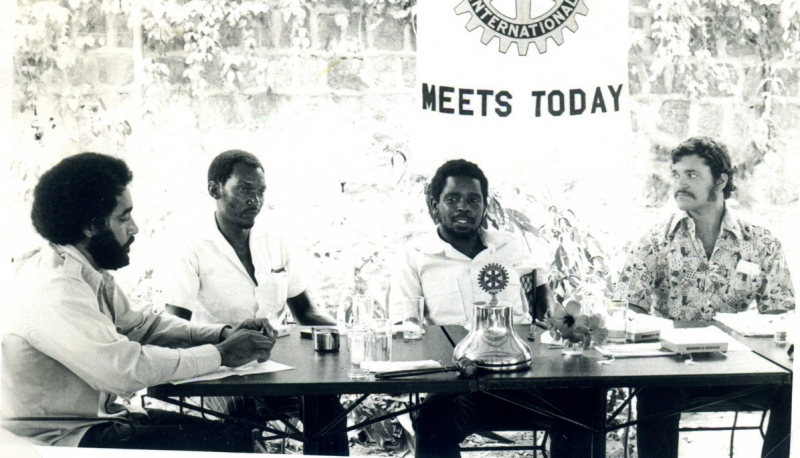
Photo: historicstkitts.kn






